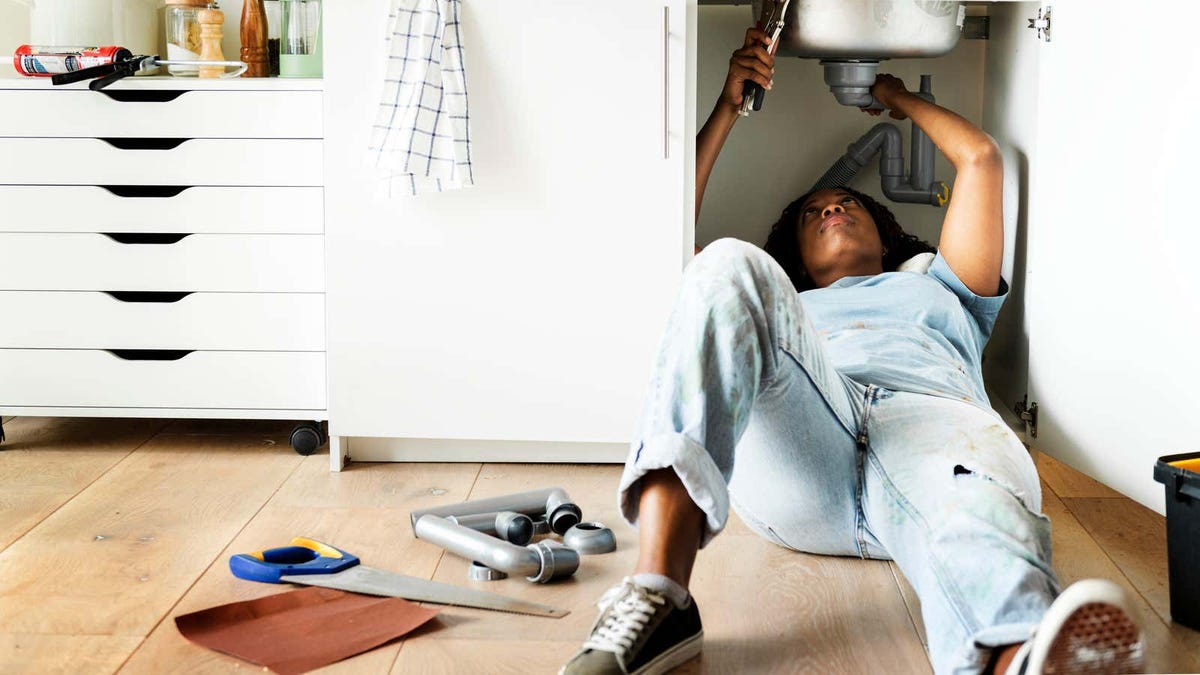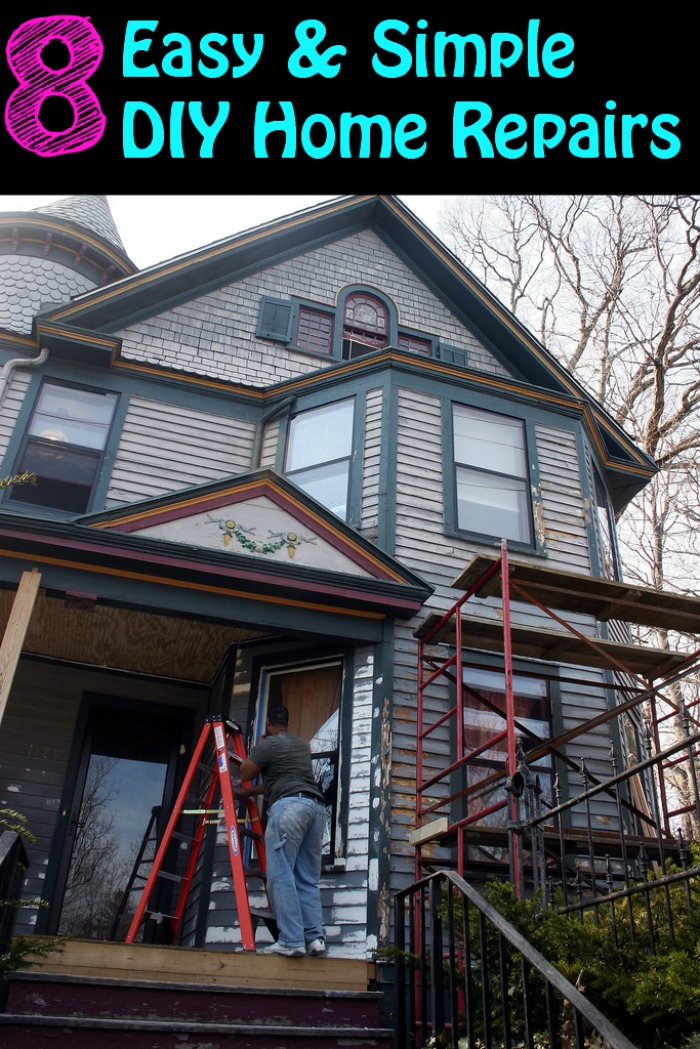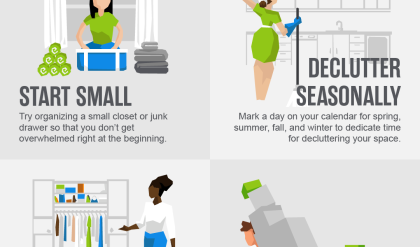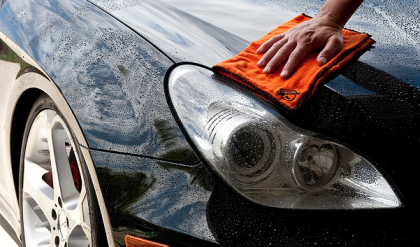
Conquer Your Home’s Hiccups: 5 Easy DIY Repairs That’ll Impress
That nagging drip, the wobbly shelf, the mysteriously flickering light – these minor home annoyances can quickly morph into major headaches. But before you reach for the phonebook (or your phone’s contact list), consider this: many common home repairs are surprisingly simple DIY projects. Empowering yourself with a few basic skills not only saves you money but also provides a profound sense of accomplishment. Let’s dive into five easy fixes that will transform you from homeowner to home *hero*.
1. Banish the Drip: Mastering the Leaky Faucet
A dripping faucet is more than just an irritating sound; it’s a constant, silent drain on your water bill. Fortunately, fixing a leaky faucet is often a straightforward process, requiring minimal tools and know-how. The culprit is usually a worn-out O-ring or cartridge. A quick trip to your local hardware store for replacement parts (bring a sample of your faucet if possible!), a little patience, and a YouTube tutorial (seriously, there’s a video for everything!), and you’ll be enjoying the blissful silence of a leak-free faucet.
| Problem | Solution |
|---|---|
| Dripping faucet | Replace O-ring or cartridge |
2. Shelf Life Extension: Reinforce Wobbly Shelves
That beloved bookshelf holding your prized first edition collection suddenly feels like it’s planning a dramatic escape? Don’t panic! Wobbly shelves are often caused by loose screws or insufficient support. Grab your trusty screwdriver, some wood glue (for extra strength), and maybe a few longer screws. Tighten existing screws, add a dab of glue for extra hold, and consider adding support brackets for heavier shelves. It’s a simple fix that prevents potential disasters (and keeps your precious books safe).
| Problem | Solution |
|---|---|
| Wobbly shelf | Tighten screws, add glue & brackets |
3. Lighten Up: Conquering Flickering Lights
A flickering light isn’t just annoying; it can be a sign of a more serious electrical problem. However, many instances of flickering are due to a loose bulb or a faulty connection. Before calling an electrician, try tightening the bulb firmly. If that doesn’t work, carefully inspect the light fixture’s wiring for loose connections. If you’re uncomfortable working with electricity, always prioritize safety and call a professional. However, many minor flickering issues are easily resolved with a little attention to detail.
| Problem | Solution |
|---|---|
| Flickering light | Tighten bulb, check wiring |
4. Stop the Squeak: Silencing Noisy Doors
That persistent squeak from your bedroom door can drive even the most patient person to distraction. The good news? A squeaky door is often easily silenced. A little lubrication is usually all it takes. Try lubricating the hinges with WD-40 or a silicone-based lubricant. For stubborn squeaks, you may need to remove the door slightly to access the hinges properly. A few well-placed drops of lubricant, and peace and quiet will return to your home.
| Problem | Solution |
|---|---|
| Squeaky door | Lubricate hinges |
5. Patching Up Perfection: Simple Wall Repair
A small hole in the wall, perhaps from a rogue picture hook or a playful child’s mishap, can instantly detract from the overall aesthetic of a room. Fortunately, patching small holes is a relatively straightforward DIY project. Use spackling paste or joint compound to fill the hole, let it dry completely, sand it smooth, and then paint over the area. With a little patience and a steady hand, you can restore your walls to their former glory.
| Problem | Solution |
|---|---|
| Small wall hole | Spackle & paint |
These five simple DIY repairs are just a starting point. With a little confidence and the right tools, you’ll be amazed at what you can accomplish. Remember to always prioritize safety, and if you’re ever unsure about a repair, don’t hesitate to call a qualified professional. But for those minor home irritations, embrace the challenge, and enjoy the satisfaction of a job well done – and a home that’s working perfectly!

Additional Information
DIY Home Repairs: A Deeper Dive into 5 Easy Fixes and Their Broader Implications
The appeal of DIY home repairs is multifaceted: cost savings, a sense of accomplishment, and increased homeowner familiarity with their property. However, a superficial approach to even “easy” fixes can lead to costly mistakes or, worse, safety hazards. This expanded analysis delves deeper into five common DIY projects, examining potential pitfalls, advanced techniques, and the broader context of home maintenance.
1. Fixing a Leaky Faucet:
While seemingly simple, a leaky faucet represents a significant issue beyond mere dripping. The seemingly minor drip can waste gallons of water annually. The EPA estimates that a leaky faucet dripping at the rate of one drip per second can waste up to 3,000 gallons of water per year. This translates to increased water bills and contributes to unnecessary water consumption, a critical environmental concern.
Beyond the Basics: Replacing a faucet cartridge is a common solution, but understanding the different types of faucets (compression, cartridge, ball, ceramic disc) is crucial for selecting the correct replacement part. Incorrect identification can lead to further damage or necessitate a more extensive repair. Advanced techniques involve using a plumber’s wrench to avoid damaging the faucet body and applying Teflon tape correctly to prevent future leaks. Ignoring underlying issues like corroded pipes, however, can lead to persistent leaks despite the faucet replacement.
2. Patching Drywall:
Drywall repair is a frequent DIY project, often necessitated by minor impacts or nail holes. However, improper patching can result in a noticeable imperfection, requiring costly professional remediation.
Beyond the Basics: Achieving an invisible patch requires careful consideration of the compound type, application techniques (feathering the edges), and sanding. Using a pre-mixed compound for ease may seem convenient, but a higher quality, self-setting compound will provide superior results and longevity. Advanced techniques involve using drywall mesh tape for larger holes to provide greater structural integrity and prevent cracking. Failure to correctly prime and paint the patched area can leave behind a noticeable discoloration.
3. Unclogging a Drain:
Clogged drains are a common household nuisance, often attributable to hair, grease, or soap buildup. While chemical drain cleaners offer a quick solution, their overuse can damage pipes and contribute to environmental pollution.
Beyond the Basics: Employing a plunger correctly is critical, ensuring a complete seal around the drain opening. For persistent clogs, a drain snake (also known as a plumber’s snake) is a more effective and environmentally friendly alternative to harsh chemicals. Understanding the different types of drain snakes (manual, electric) and selecting the appropriate size for the drain is crucial. For deeper clogs or recurring issues, a camera inspection may be necessary to identify and address the root cause. Ignoring persistent clogs can lead to sewer backups and substantial repair costs.
4. Replacing a Broken Light Switch:
Replacing a light switch seems straightforward, but working with electricity demands caution. Incorrect wiring can lead to electrical shocks or fire hazards.
Beyond the Basics: Before starting, turning off the power at the breaker box is paramount. Understanding the different types of switches (single-pole, three-way, dimmer) and identifying the correct wiring configuration is crucial for safety and functionality. Using a non-contact voltage tester to verify the power is off before handling the wiring is an essential safety precaution. Improper wiring can lead to short circuits and fire risks, making this a critical step.
5. Repairing a Squeaky Door:
A squeaky door is a minor annoyance, but ignoring it can lead to increased wear and tear on the door hinges and eventually damage to the door frame.
Beyond the Basics: Lubricating hinges is a common solution, but selecting the correct lubricant is important. WD-40, while readily available, is a temporary solution; heavier lubricants such as silicone-based sprays offer longer-lasting results. For persistent squeaking, the hinge pins may need to be removed, cleaned, and relubricated. In cases of significant wear, hinge replacement might be necessary. Ignoring the squeak can lead to accelerated wear on hinges and the door frame, resulting in more expensive repairs in the long run.
Conclusion:
While DIY home repairs offer significant benefits, a thorough understanding of the project’s intricacies, potential pitfalls, and safety considerations is crucial. A proactive approach to home maintenance, combined with a willingness to learn advanced techniques and employ appropriate safety measures, can save money, enhance homeowner skills, and ensure the longevity and safety of the home. Ignoring seemingly minor issues can often lead to larger and more expensive problems down the line.






